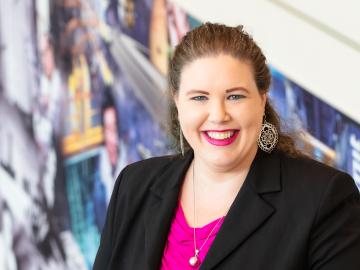
Filter News
Area of Research
- (-) Biology and Environment (56)
- (-) Materials (76)
- Advanced Manufacturing (1)
- Biological Systems (1)
- Building Technologies (1)
- Clean Energy (63)
- Computational Engineering (1)
- Computer Science (2)
- Electricity and Smart Grid (1)
- Energy Sciences (1)
- Fuel Cycle Science and Technology (1)
- Fusion and Fission (19)
- Fusion Energy (3)
- Isotope Development and Production (1)
- Isotopes (15)
- Materials Characterization (2)
- Materials Under Extremes (1)
- National Security (26)
- Neutron Science (32)
- Nuclear Science and Technology (2)
- Supercomputing (73)
News Topics
- 3-D Printing/Advanced Manufacturing (6)
- Advanced Reactors (1)
- Artificial Intelligence (3)
- Big Data (5)
- Bioenergy (18)
- Biology (24)
- Biomedical (3)
- Biotechnology (5)
- Buildings (3)
- Chemical Sciences (17)
- Clean Water (3)
- Climate Change (18)
- Composites (3)
- Computer Science (8)
- Coronavirus (4)
- Critical Materials (4)
- Decarbonization (13)
- Energy Storage (6)
- Environment (35)
- Exascale Computing (2)
- Frontier (2)
- Fusion (2)
- Grid (3)
- High-Performance Computing (10)
- Hydropower (3)
- Irradiation (1)
- Isotopes (3)
- Machine Learning (3)
- Materials (41)
- Materials Science (9)
- Mathematics (2)
- Mercury (2)
- Microscopy (5)
- Molten Salt (1)
- Nanotechnology (4)
- National Security (2)
- Net Zero (2)
- Neutron Science (8)
- Nuclear Energy (4)
- Partnerships (7)
- Physics (10)
- Polymers (4)
- Quantum Computing (2)
- Quantum Science (1)
- Renewable Energy (2)
- Simulation (13)
- Summit (2)
- Sustainable Energy (11)
- Transportation (3)
Media Contacts
The Autonomous Systems group at ORNL is in high demand as it incorporates remote sensing into projects needing a bird’s-eye perspective.

Anne Campbell has been selected as a topical editor for a special issue of the journal Frontiers in Nuclear Engineering, titled “Women in Nuclear Engineering Research.”

A DNA editing tool adapted by Oak Ridge National Laboratory scientists makes engineering microbes for everything from bioenergy production to plastics recycling easier and faster.

ORNL has entered a strategic research partnership with the United Kingdom Atomic Energy Authority, or UKAEA, to investigate how different types of materials behave under the influence of high-energy neutron sources. The $4 million project is part of UKAEA's roadmap program, which aims to produce electricity from fusion.

Alice Perrin is passionate about scientific research, but also beans — as in legumes.

For nearly six years, the Majorana Demonstrator quietly listened to the universe. Nearly a mile underground at the Sanford Underground Research Facility, or SURF, in Lead, South Dakota, the experiment collected data that could answer one of the most perplexing questions in physics: Why is the universe filled with something instead of nothing?

A scientific instrument at ORNL could help create a noninvasive cancer treatment derived from a common tropical plant.

Joanna Tannous has found the perfect organism to study to satisfy her deeply curious nature, her skills in biochemistry and genetics, and a drive to create solutions for a better world. The organism is a poorly understood life form that greatly influences its environment and is unique enough to deserve its own biological kingdom: fungi.

Environmental scientists at ORNL have recently expanded collaborations with minority-serving institutions and historically Black colleges and universities across the nation to broaden the experiences and skills of student scientists while bringing fresh insights to the national lab’s missions.

Warming a crystal of the mineral fresnoite, ORNL scientists discovered that excitations called phasons carried heat three times farther and faster than phonons, the excitations that usually carry heat through a material.


